Direction (1-4): In each of the following questions, three quantities (Quantity I, Quantity II, Quantity III) are given. Compare their numerical value and choose the correct options.
Read the given information and answer the following questions carefully.
There are total 200 students in a class who are playing either badminton or tennis or both. Boys playing only tennis is ⅓rd of the total number of girls playing only one game and girls playing badminton is equal to the number of boys in the class. Number of girls playing both the games together and girls playing only tennis is respectively 40% more than and twice of number of boys playing only badminton. Number of boys playing both the games together is half of the girls playing only badminton.
Q1. Quantity I: Number of boys playing tennis.
Quantity II: Number of girls playing only tennis.
Quantity III: Difference between number of boys playing only badminton and number of students playing both the games together.
(a) Quantity II>Quantity III>Quantity I
(b) Quantity I=Quantity II=Quantity III
(c) Quantity I=Quantity II>Quantity III
(d) Quantity II<Quantity I>Quantity III
(e) Quantity III=Quantity I>Quantity II
Q2. Quantity I: Difference between the number of girls playing either of the two games only.
Quantity II: 60% of the number of boys playing both the games together.
Quantity III: 40% of the difference between boys playing only badminton and girls playing only tennis.
(a) Quantity II=Quantity I>Quantity III
(b) Quantity I=Quantity II=Quantity III
(c) Quantity III=Quantity II>Quantity II
(d) Quantity II>Quantity III=Quantity I
(e) None of the these
Q3. Quantity I: ‘b’- First vessel contains 40 lit of mixture (milk: water=2: 1). Second vessel contains only ‘a’ lit of water. When ‘b’ lit of mixture is taken out from first vessel and poured into second vessel then ratio of milk to water in it becomes 2:3. And if 33 lit of mixture is taken from first vessel and added to second vessel then quantity of milk and water becomes equal in second vessel.
Quantity II: ‘c’ – 20 lit of acid solution of 15% acid content is mixed with ‘c’ liters of acid solution of 30% acid content so that the acid content in the resulting mixture be more than or equal to 22.5% but less than or equal to 25%.
Quantity III: Vessel A & B contains the mixture of three cold-drinks (i.e. Sprite, Fanta, Coke) in the ratio of 5: 3: 8 & 3: 2: 2 respectively. If both vessels are mixed in the respective ratio of 8: 7 into vessel C then difference between quantities of Sprite (taken from A and B) in C is four liters, then find difference between the quantity of Fanta and Coke in vessel C?
(a) Quantity II<Quantity I≤Quantity III
(b) Quantity I<Quantity III≤Quantity II
(c) Quantity III=Quantity II>Quantity II
(d) Quantity II≥Quantity III=Quantity I
(e) None of these
Q4. Quantity I: The chances of India wining a match against England is ⅕. What is the
minimum number of matches India should play against England so that there is a fair
chance of winning a match?
Quantity II: How many five digits numbers are possible when unit digit of that number is
prime and the product of all the digits of that number is also prime.
Quantity III: A and B starts walking towards each other at 6 AM at the respective speed of 5 km/h and 8 km/h. They meet at a place where they have coffee and at 12:04 PM they again start walking towards their destination. Find the time spent on coffee (in minutes) if A reach his destination at 9:40 PM.
(a) Quantity II<Quantity I≤Quantity III
(b) Quantity I<Quantity III≤Quantity II
(c) Quantity III=Quantity II>Quantity II
(d) Quantity II≥Quantity III=Quantity I
(e) None of these
Q5. B is thrice as efficient as C. B and C can compete a work together in 45/2 days. A takes 50% more days than the days taken by A and B to complete the same work together.
Quantity I: No. of days taken by fastest among them to complete the work alone.
Quantity II: Time taken by A and C to complete the work together.
(a) Quantity I > Quantity II
(b) Quantity I < Quantity II
(c) Quantity I ≥ Quantity II
(d) Quantity I ≤ Quantity II
(e) Quantity I = Quantity II or No relation
Q6. Quantity I: difference between the largest and the smallest sum. A sum of Rs. 1440 is lent out in three parts in such a way that the interests on first part at 2% for 3 years, second part at 3% for 4 years and third part at 4% for 5 years are equal.
Quantity II: Cost price of two articles is same. One is sold at a profit of 15% and the other for Rs. 150 more than the first. If the net profit is 30%. Find the cost price of each article.
(a) Quantity I = Quantity II or No relation
(b) Quantity I < Quantity II
(c) Quantity I ≤ Quantity II
(d) Quantity I ≥ Quantity II
(e) Quantity I > Quantity II
Q7. A train crosses another train in 10 sec. Find out difference between the lengths of the trains.
A. Ratio between the lengths the of second and first train is 4: 5.
B. Ratio between the speed of first and second trains is 2: 3.
C. The speed of first train is 36 km/hr.
(a) Only A and B together
(b) All the three statements are required
(c) Only A and C together
(d) Questions can’t be answered even after using all the information
(e) None of these
Q8. Find the area of a rhombus.
A. The ratio of the diagonals of the rhombus is 3: 4.
B. The perimeter of the rhombus is equal to that of a square whose diagonal length is 40 √2m.
C. The difference between the squares of the diagonals is 448 m2.
(a) All statements are required
(b) Any two of the given statements
(c) Only A and C
(d) Only B and C
(e) None of these
Q9. How many marks did Sumit obtain in Maths?
A. The average marks obtained by Sumit in History, English and Maths is 70.
B. The difference between the marks obtained by Sumit in English and that in History is 10.
C. The total marks obtained by Sumit in Biology and Maths is 120.
(a) None of these
(b) Both A and B
(c) All of these
(d) Any two of them
(e) Question can’t be answered even after using all the information
Q10. Find the two-digit number.
A. Sum of the squares of the two digits of the two digits number is 26.
B. The ratio between the two-digit number and the sum of the digits of that number is 5:2.
C. The digit in ten’s place is 4 less than the digit in unit place.
(a) Any one of them
(b) Only A and B together are sufficient
(c) Either A and C together or B alone
(d) Only B and C together are sufficient
(e) None of these
Solutions
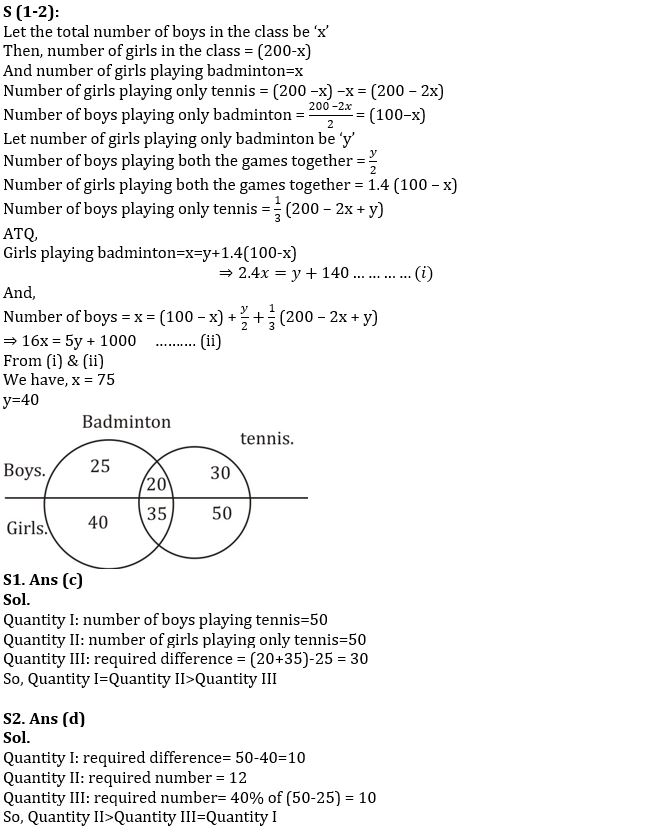

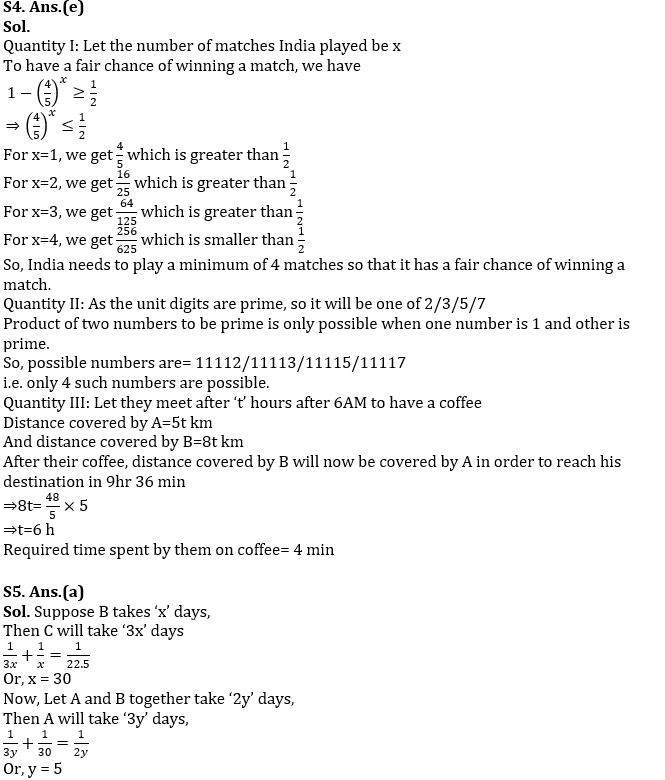
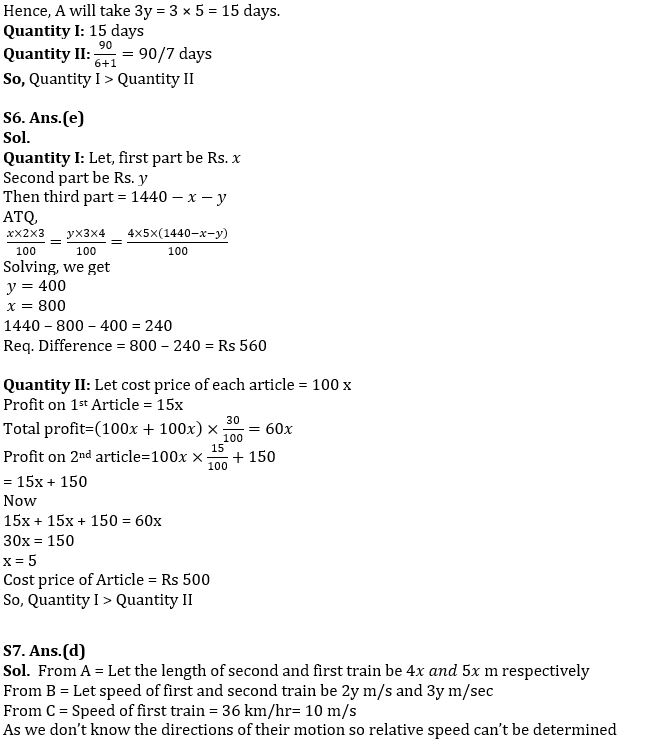
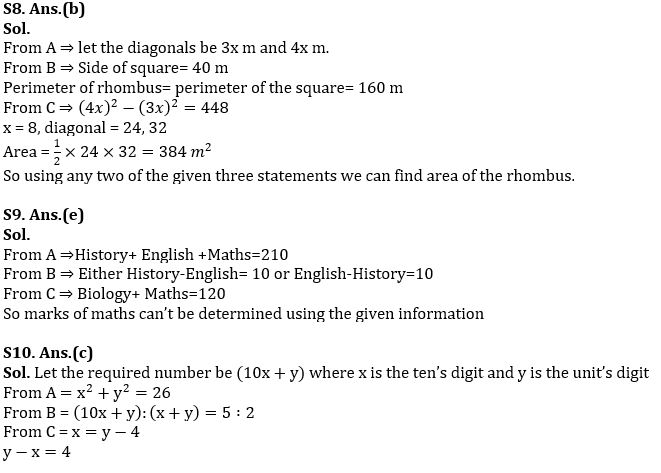


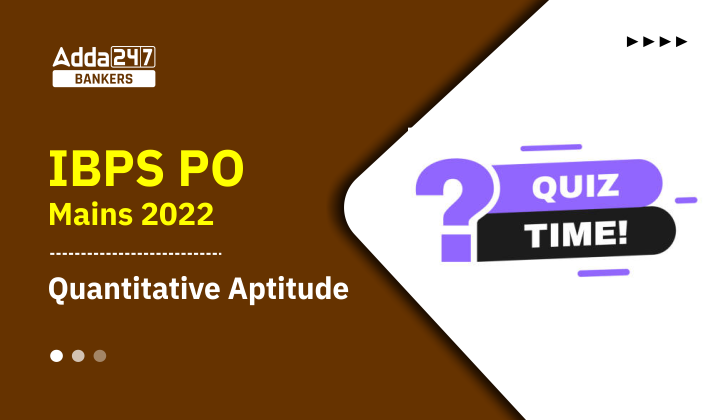
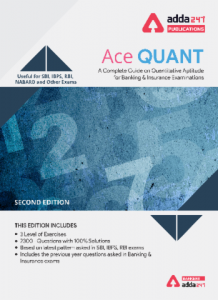

 Quantitative Aptitude Quiz For Bank Main...
Quantitative Aptitude Quiz For Bank Main...
 Quantitative Aptitude Quiz For Bank Foun...
Quantitative Aptitude Quiz For Bank Foun...


